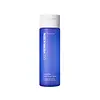What's inside
What's inside
 Key Ingredients
Key Ingredients

 Benefits
Benefits

 Concerns
Concerns

 Ingredients Side-by-side
Ingredients Side-by-side

Water
Skin ConditioningGlycolic Acid
BufferingHamamelis Virginiana Water
AstringentLactic Acid
BufferingSodium Hydroxide
BufferingPolysorbate 20
EmulsifyingPhenoxyethanol
PreservativeParfum
MaskingPhytic Acid
Ethylhexylglycerin
Skin ConditioningGlycerin
HumectantChamomilla Recutita Flower Extract
MaskingCitrus Limon Fruit Extract
MaskingGlycyrrhiza Glabra Root Extract
BleachingSaccharum Officinarum Extract
MoisturisingSantalum Album Extract
CleansingBenzoic Acid
MaskingLeuconostoc/Radish Root Ferment Filtrate
AntimicrobialTocopherol
AntioxidantCitral
PerfumingLimonene
PerfumingLinalool
PerfumingWater, Glycolic Acid, Hamamelis Virginiana Water, Lactic Acid, Sodium Hydroxide, Polysorbate 20, Phenoxyethanol, Parfum, Phytic Acid, Ethylhexylglycerin, Glycerin, Chamomilla Recutita Flower Extract, Citrus Limon Fruit Extract, Glycyrrhiza Glabra Root Extract, Saccharum Officinarum Extract, Santalum Album Extract, Benzoic Acid, Leuconostoc/Radish Root Ferment Filtrate, Tocopherol, Citral, Limonene, Linalool
Water
Skin ConditioningNiacinamide
SmoothingDimethicone
EmollientAluminum Starch Octenylsuccinate
AbsorbentGlycerin
HumectantButylene Glycol
HumectantPanthenol
Skin ConditioningPolysorbate 20
EmulsifyingActinidia Chinensis Fruit Extract
EmollientChrysanthemum Parthenium Extract
Skin ConditioningGlycyrrhiza Glabra Root Extract
BleachingCamellia Sinensis Leaf Extract
AntimicrobialAllantoin
Skin ConditioningAminomethyl Propanol
BufferingHydroxyacetophenone
AntioxidantUndecylenoyl Phenylalanine
Skin ConditioningAcrylates/Vinyl Isodecanoate Crosspolymer
Emulsion StabilisingDimethiconol
EmollientLaureth-4
EmulsifyingGlyceryl Acrylate/Acrylic Acid Copolymer
HumectantPhenoxyethanol
PreservativeDisodium EDTA
Pvm/Ma Copolymer
Emulsion StabilisingTetrasodium EDTA
Water, Niacinamide, Dimethicone, Aluminum Starch Octenylsuccinate, Glycerin, Butylene Glycol, Panthenol, Polysorbate 20, Actinidia Chinensis Fruit Extract, Chrysanthemum Parthenium Extract, Glycyrrhiza Glabra Root Extract, Camellia Sinensis Leaf Extract, Allantoin, Aminomethyl Propanol, Hydroxyacetophenone, Undecylenoyl Phenylalanine, Acrylates/Vinyl Isodecanoate Crosspolymer, Dimethiconol, Laureth-4, Glyceryl Acrylate/Acrylic Acid Copolymer, Phenoxyethanol, Disodium EDTA, Pvm/Ma Copolymer, Tetrasodium EDTA
 Reviews
Reviews

Ingredients Explained
These ingredients are found in both products.
Ingredients higher up in an ingredient list are typically present in a larger amount.
Glycerin is already naturally found in your skin. It helps moisturize and protect your skin.
A study from 2016 found glycerin to be more effective as a humectant than AHAs and hyaluronic acid.
As a humectant, it helps the skin stay hydrated by pulling moisture to your skin. The low molecular weight of glycerin allows it to pull moisture into the deeper layers of your skin.
Hydrated skin improves your skin barrier; Your skin barrier helps protect against irritants and bacteria.
Glycerin has also been found to have antimicrobial and antiviral properties. Due to these properties, glycerin is often used in wound and burn treatments.
In cosmetics, glycerin is usually derived from plants such as soybean or palm. However, it can also be sourced from animals, such as tallow or animal fat.
This ingredient is organic, colorless, odorless, and non-toxic.
Glycerin is the name for this ingredient in American English. British English uses Glycerol/Glycerine.
Learn more about GlycerinGlycyrrhiza Glabra Root Extract is an extract of the roots of Licorice. It has been found to have several benefits such as skin hydrating, conditioning, and soothing.
One component, glabridin, has extra potent antioxidant and soothing properties. It has also been found to block pigmentation from UVB rays in guinea pigs.
Licorice Root also contains a flavonoid. Flavonoids are a natural substance from in plants. Flavonoids also have antioxidant properties.
Another component, glycyrrhizin, has been found to have anti-inflammatory and antimicrobial benefits. This may make licorice root extract effective at treating acne. However, more research is needed to support this.
Liquiritin is one of the flavone compounds found in licorice. It has been found to help lighten skin by preventing tyrosinase from reacting with tyrosine. When the two react, protein is converted to melanin. Melanin is the substance in your body that gives your features pigmentation.
Learn more about Glycyrrhiza Glabra Root ExtractPhenoxyethanol is a preservative that has germicide, antimicrobial, and aromatic properties. Studies show that phenoxyethanol can prevent microbial growth. By itself, it has a scent that is similar to that of a rose.
It's often used in formulations along with Caprylyl Glycol to preserve the shelf life of products.
Polysorbate 20 is made by combining ethoxylation of sorbitan, ethylene oxide, and lauric acid. It is a mild cleansing agent, surfactant, and emulsifier.
As a surfactant, it helps collect dirt and oils for washing. Emulsifiers prevent oils and water from separating.
Polysorbate 20 also adds scent to a product. Since it is made using sorbitol, it has a sweet scent. Sorbitol can also be found in fruits such as apples and peaches.
The lauric acid used to create Polysorbate 20 is often derived from coconuts.
Polysorbate 20 may not be fungal acne safe.
Learn more about Polysorbate 20Water. It's the most common cosmetic ingredient of all. You'll usually see it at the top of ingredient lists, meaning that it makes up the largest part of the product.
So why is it so popular? Water most often acts as a solvent - this means that it helps dissolve other ingredients into the formulation.
You'll also recognize water as that liquid we all need to stay alive. If you see this, drink a glass of water. Stay hydrated!
Learn more about Water